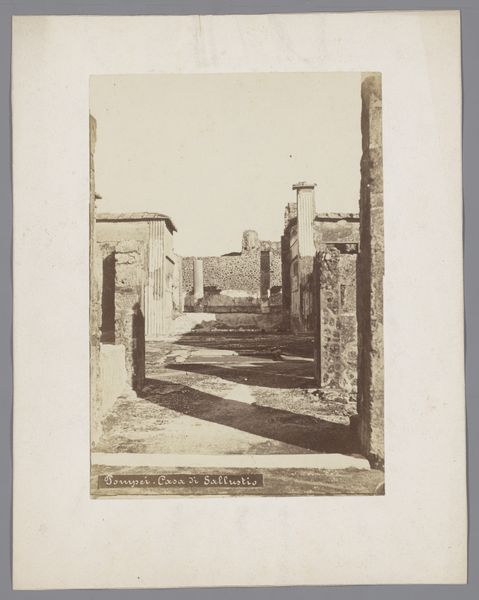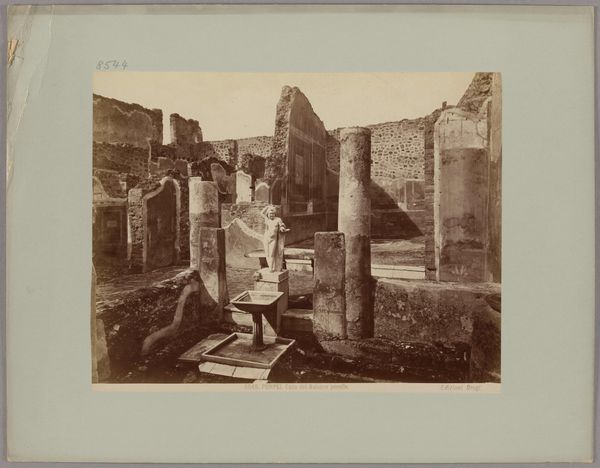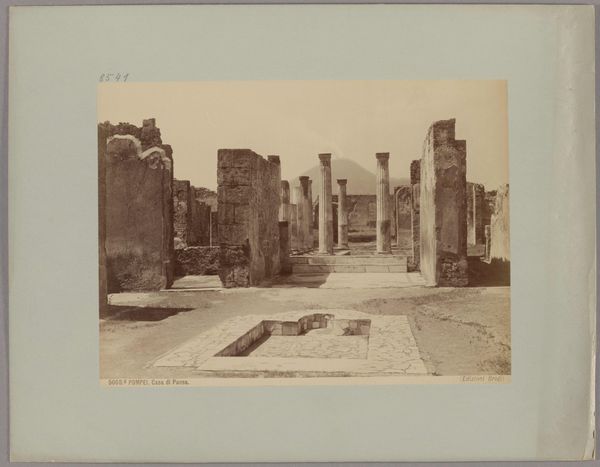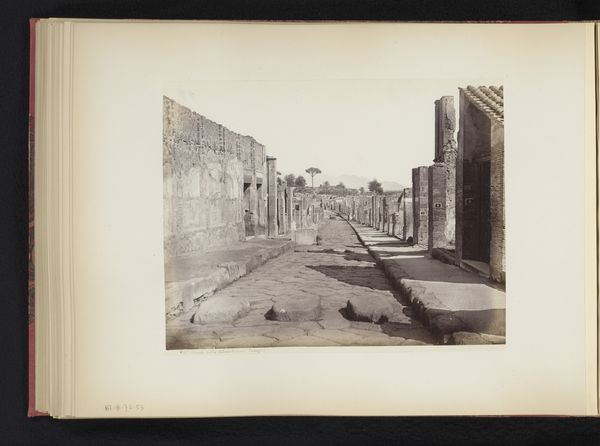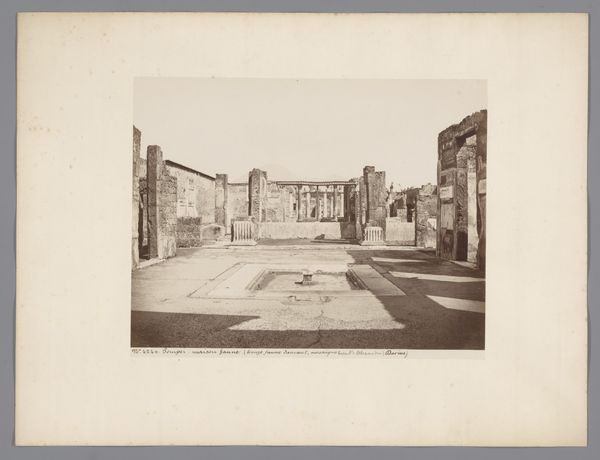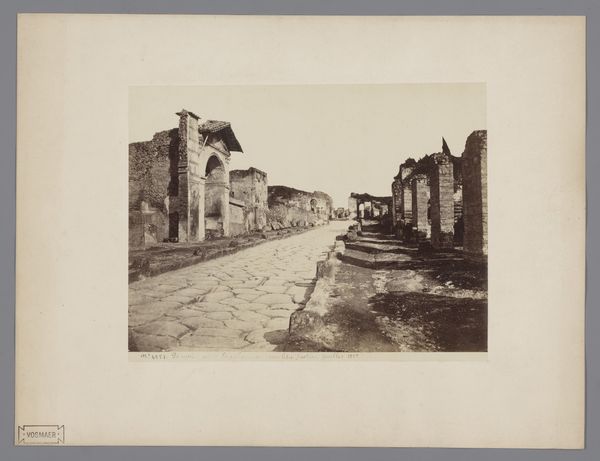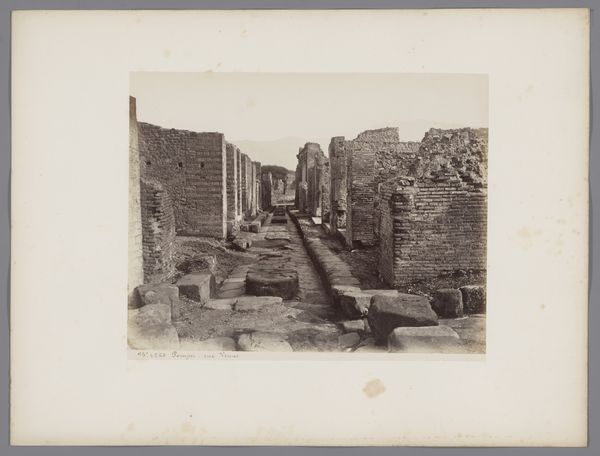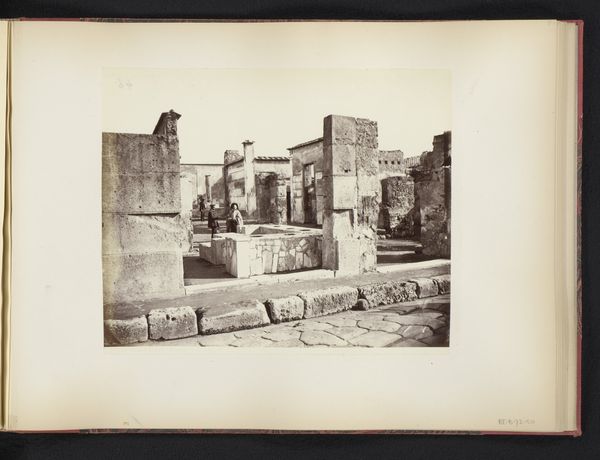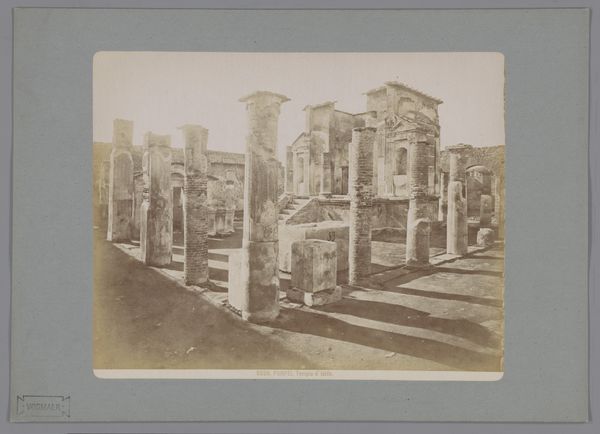
print, photography
# print
#
landscape
#
photography
#
ancient-mediterranean
#
cityscape
#
realism
Dimensions: height 306 mm, width 403 mm
Copyright: Rijks Museum: Open Domain
Curator: Before us is a photograph titled "Restanten van het huis van Ariadne te Pompeï, Italië," taken between 1857 and 1875 by Giorgio Sommer. It's a captivating print rendered through the relatively new medium of photography, depicting a cityscape in ruins. Editor: There's such starkness in the image. The heavy shadows cast by those looming columns—it’s somber, monumental, almost a memento mori captured in monochrome. Curator: Absolutely. Sommer's work exists in dialogue with our contemporary understanding of archaeological sites and cultural memory. Think about the act of photographing these ruins in that era. It becomes a kind of historical record, an early form of cultural preservation attempting to grapple with ideas of lost civilizations and what remains. What did Roman domestic space mean for inhabitants then, and viewers now? Editor: And the symbolism! Ariadne, of course, the figure of mythology abandoned on Naxos. Seeing these ruins of her house sparks an interesting connection between the private, intimate life—domestic space, marriage—and its ultimate disintegration. Curator: I wonder, too, about Sommer’s perspective, both literally and figuratively. He is not just documenting the physical remains but arguably capturing the lingering sense of loss, disruption and impermanence, speaking perhaps to contemporary social anxieties regarding political change. There's a way to understand his art as political. Editor: Photography like this became a tool of documentation but also fantasy, for me it is difficult to imagine how that period represented or interpreted myth without clear visual reference or experience with Pompeii’s architecture before, as there weren't many ways to experience ancient ruins. Photography gave that reference. It shaped visual narratives about antiquity for generations. Curator: Very insightful. It raises pertinent questions about photography’s claim to truth versus its role in the construction of historical narratives. This photograph shows a world transformed. How is history really formed or represented for future generations? What is history even made of in 1857? Editor: For me, I am struck again with how Giorgio Sommer managed to capture loss on a new photographic landscape, so strongly, conveying emotion just by ruins. It gives the viewer a sense of their personal history too. Curator: Agreed. Sommer leaves us contemplating the layers of time and history, mediated through a lens, inviting reflection on how we perceive and memorialize the past within an ever-shifting present.
Comments
No comments
Be the first to comment and join the conversation on the ultimate creative platform.


